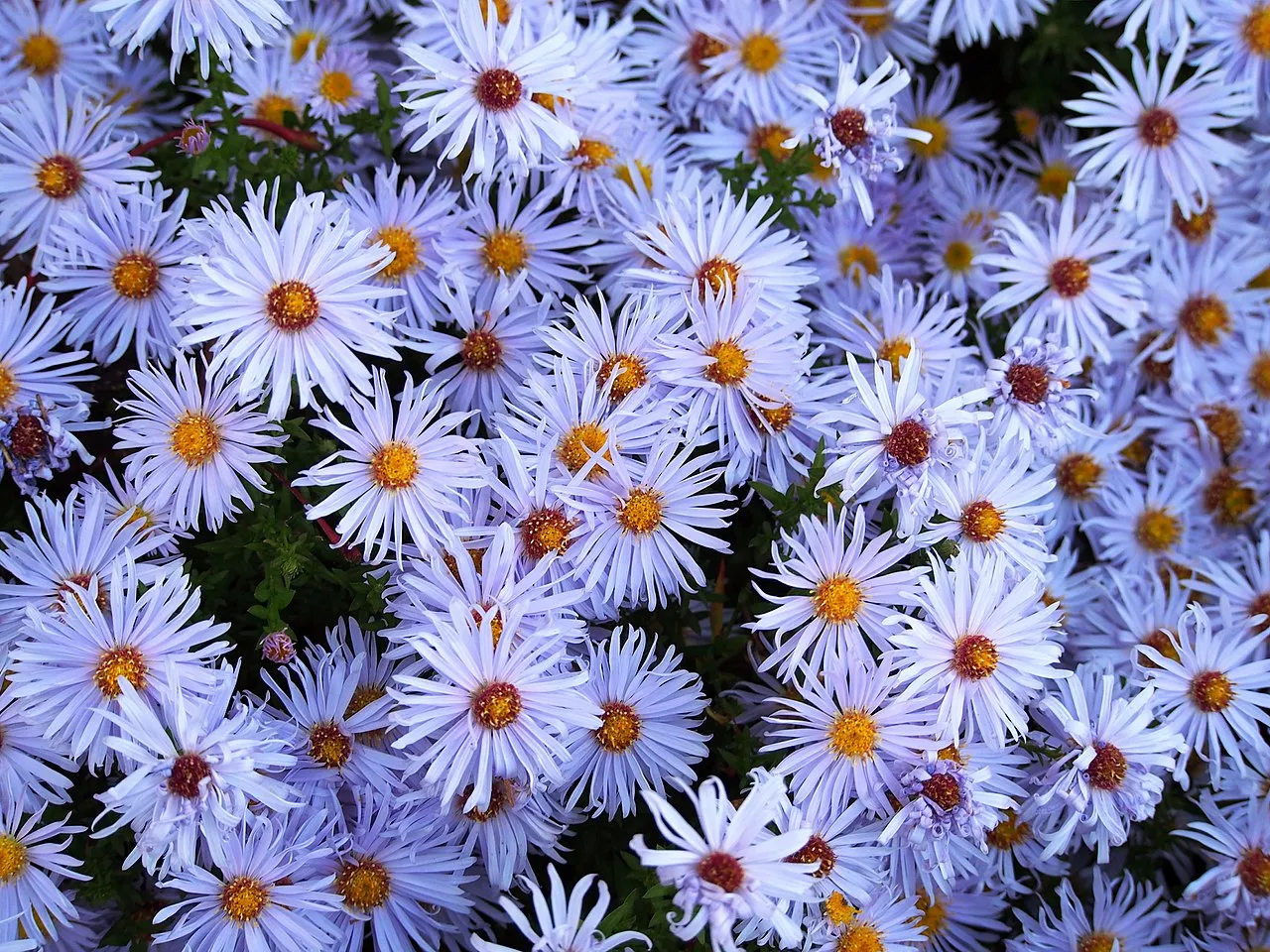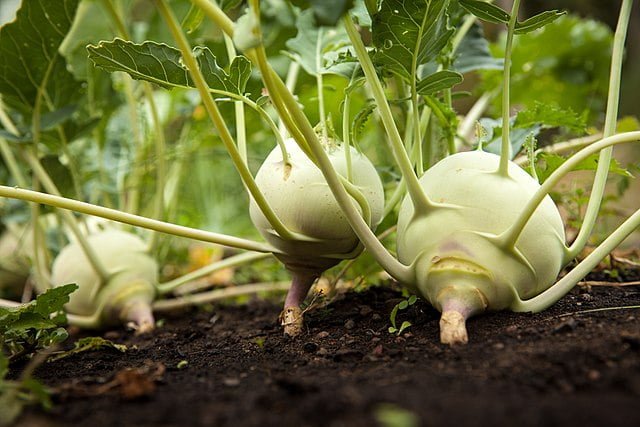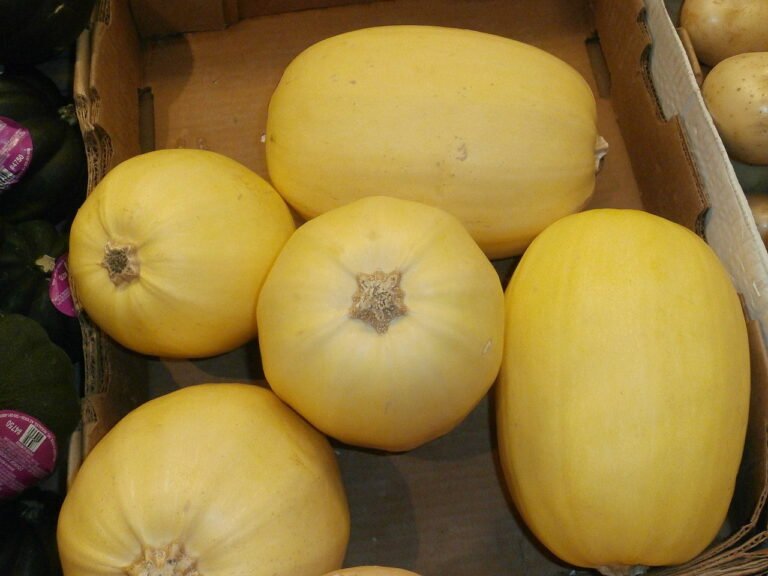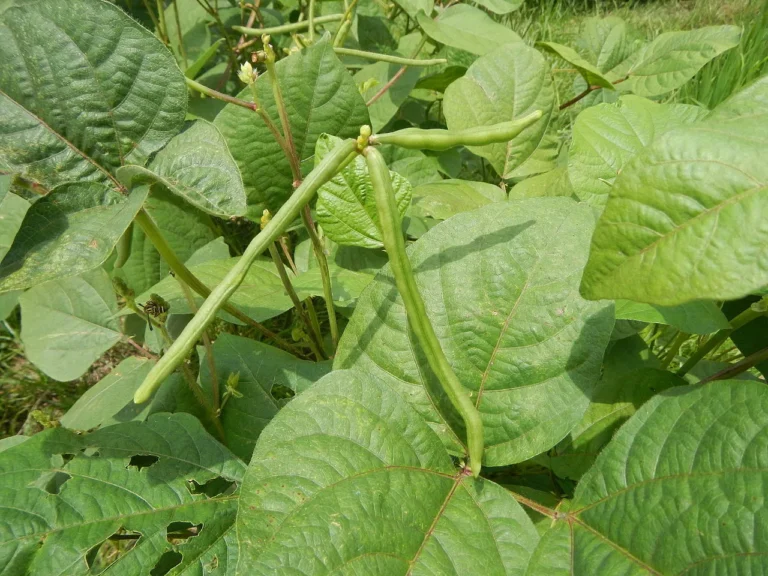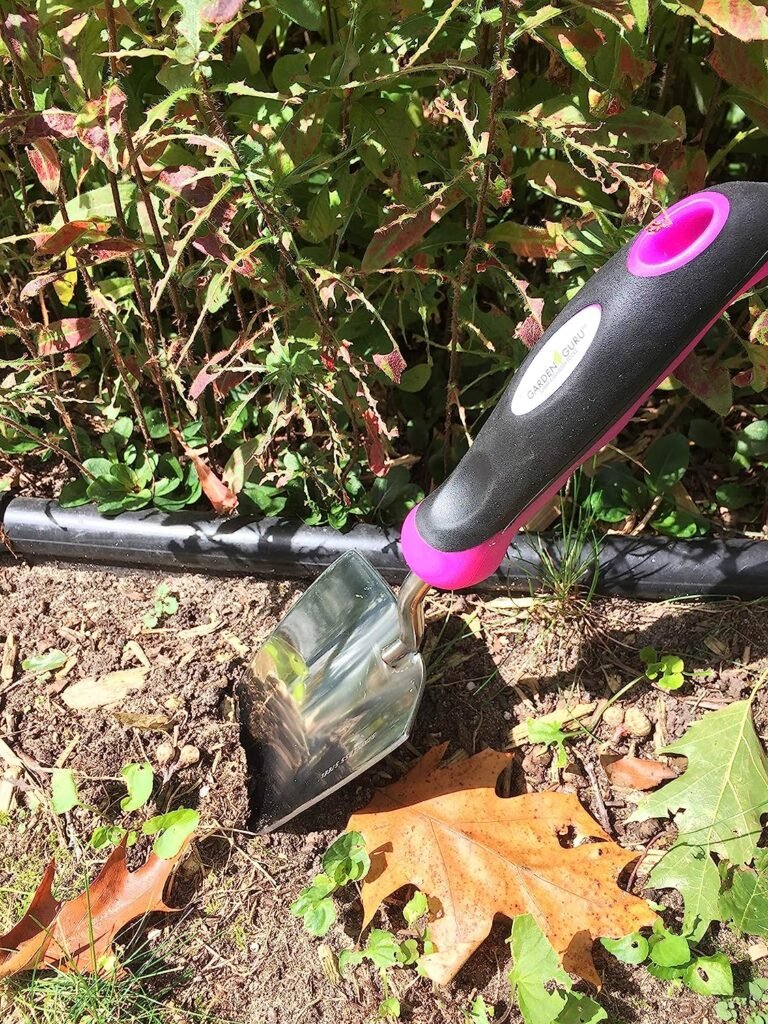Asters Complete Grow Guide
Asters are a group of perennial flowering plants that belong to the Asteraceae family, which also includes sunflowers, daisies, and chrysanthemums. Known for their vibrant star-shaped flowers, Asters bloom in late summer to fall, bringing a splash of colour to gardens when many other flowers are starting to fade. With over 600 species, Asters come in a variety of sizes, colours, and bloom times, making them a versatile choice for any garden.
How to Grow Asters
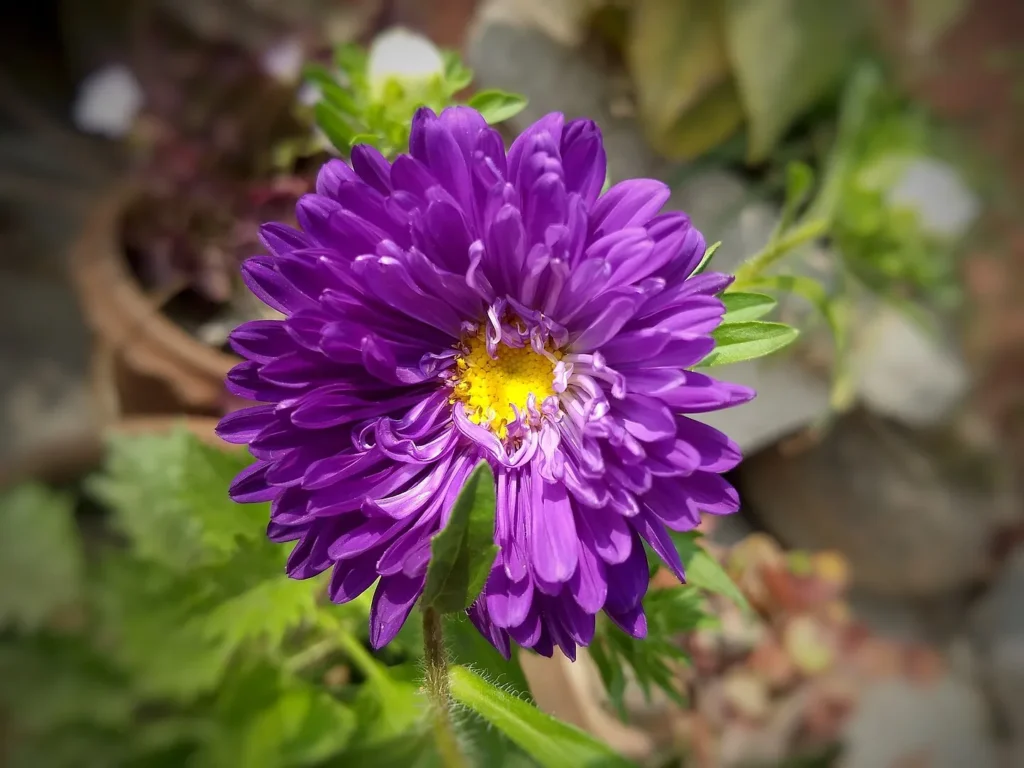
Planting Asters
When to Plant: The best time to plant Aster seedlings or divide existing plants is in spring, after the risk of frost has passed. This gives the plants ample time to establish their root systems before the winter.
Where to Plant: Asters thrive in areas with full sun to partial shade. They prefer well-draining soil with a neutral to slightly acidic pH. Choose a spot that receives at least 6 hours of sunlight daily.
How to Plant:
- Soil Preparation: Loosen the soil to a depth of 12 to 15 inches and mix in compost or aged manure to improve fertility and drainage.
- Spacing: Plant Asters 1 to 3 feet apart, depending on the variety. This spacing allows for adequate air circulation and reduces the risk of fungal diseases.
- Watering: After planting, water the Asters thoroughly. Maintain consistent moisture, especially during the first growing season.
Caring for Asters
Watering: Asters require regular watering, especially during dry spells. However, avoid overwatering, as this can lead to root rot.
Mulching: Apply a 2 to 3-inch layer of mulch around the plants to retain soil moisture and prevent weeds.
Fertilizing: Feed Asters with a balanced, slow-release fertilizer in the spring. Avoid high-nitrogen fertilizers, which can promote foliage growth at the expense of flowers.
Pruning: To encourage bushier growth and more blooms, pinch back the tips of young Aster plants in early summer. Cut back spent flowers to promote a second bloom in certain varieties.
Pest and Disease Management: Asters can be susceptible to powdery mildew, rust, and aphids. Ensure good air circulation, avoid overhead watering, and treat with appropriate organic or chemical controls if necessary.
Propagation
Asters can be propagated by division, cuttings, or seeds. Divide mature plants in the spring every 2-3 years to maintain their vigour. Softwood cuttings can be taken in early summer. For growing from seed, start indoors 6-8 weeks before the last frost date or sow directly in the garden in spring.
Common Varieties of Asters
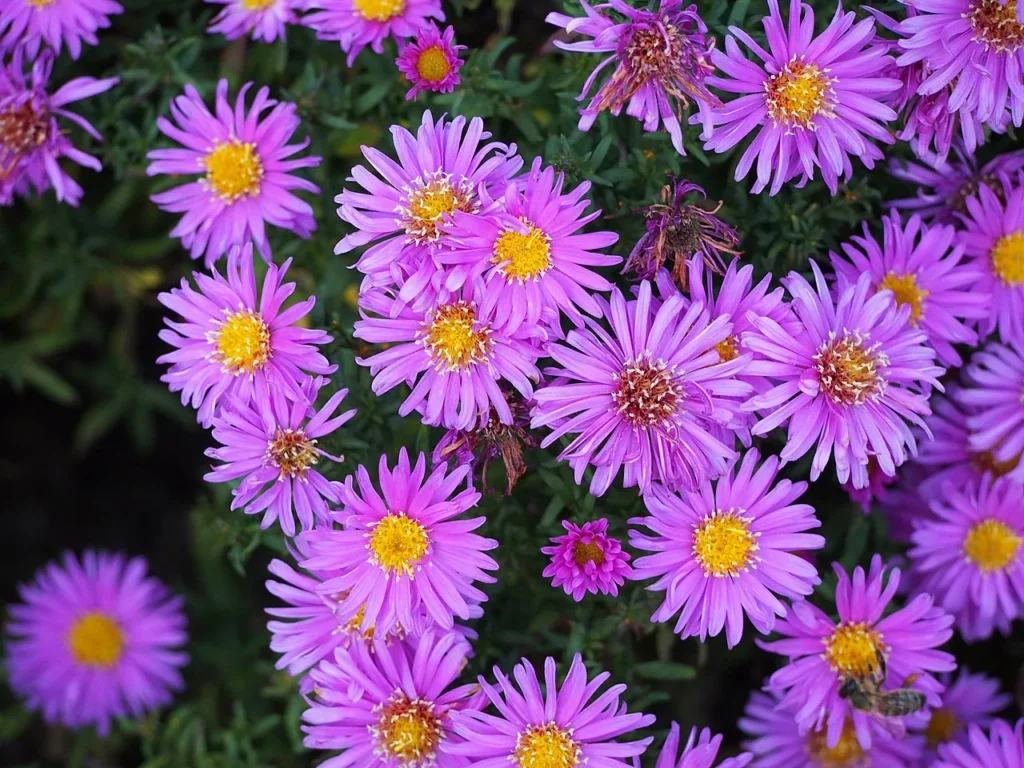
- New England Aster (Symphyotrichum novae-angliae): Known for its tall stature and purple flowers, ideal for back borders.
- New York Aster (Symphyotrichum novi-belgii): Offers a range of colours from pink to purple and a more compact size.
- Heath Aster (Symphyotrichum ericoides): Features a profusion of tiny, white flowers on bushy plants, great for ground cover.
FAQs
Additional Resources for Asters
- American Meadows: This site is a treasure trove for gardeners looking to learn more about Asters. From planting guides to care tips and inspirational garden designs, American Meadows covers it all. Their detailed care instructions and suggestions for companion plants can help you create a vibrant garden that attracts pollinators and adds colour throughout the seasons.Visit American Meadows – Asters for more information.
- Garden Design: For those who are looking to incorporate Asters into their garden landscapes aesthetically, Garden Design offers a plethora of creative ideas. Not only do they discuss the different types of Asters and their care, but they also provide expert advice on designing your garden space with Asters to achieve stunning visual effects.Explore Garden Design – Asters for inspiration and practical advice.
Final Thoughts
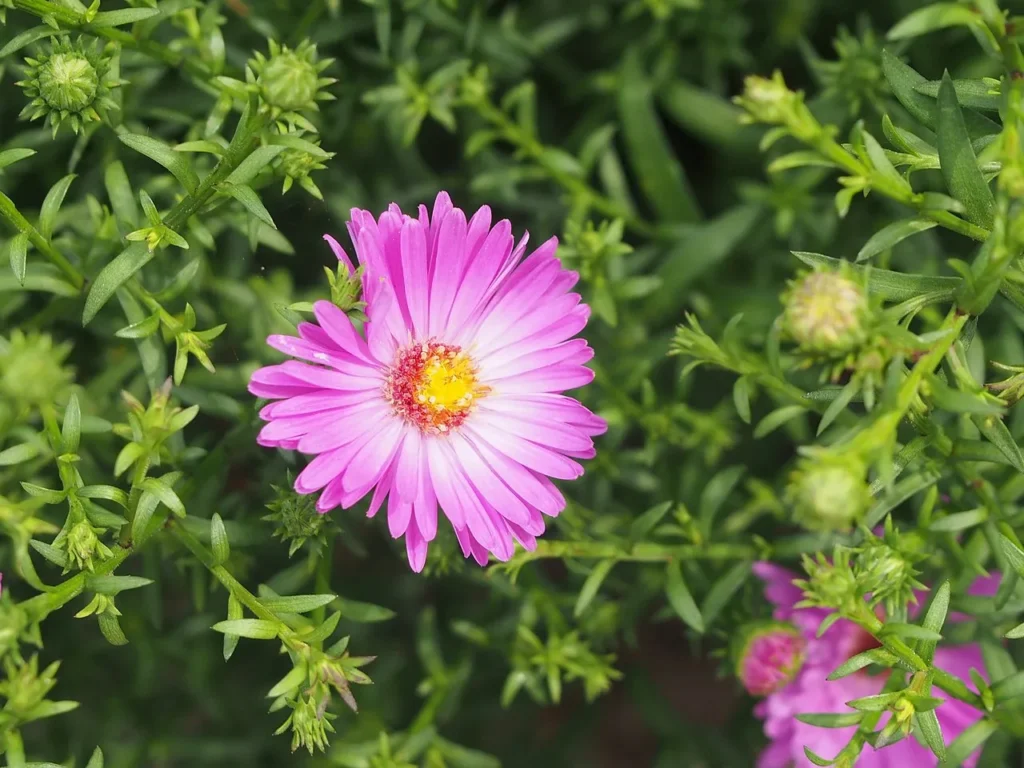
Asters are a must-have for any fall garden, offering a final flourish of colour and life as the growing season winds down. Their care is straightforward, making them suitable for gardeners of all skill levels. By following the guidelines outlined above, you can enjoy the beauty of Asters in your garden for many years to come.

